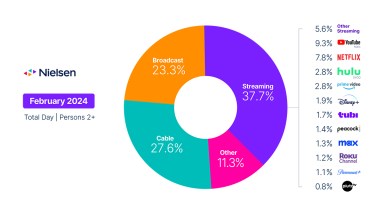Video-on-demand (VOD) services are undoubtedly transforming the way audiences consume video, so it’s important to tune in to what’s driving engagement around the world. Our recent online global survey found that while several strong motivating factors will support continued growth, there are a few barriers to be mindful of, too.
Due to the personalized nature of streaming programming, it comes as no surprise that convenience is a very important factor in the decision to watch VOD programming. Among the global respondents who watch VOD, more than three-quarters of (77%) somewhat or strongly agree they do so because they can view content when it’s convenient for them. Agreement was highest in Latin America (82%), North America (81%) and Europe (80%) and was slightly lower in the Middle East/Africa (77%) and Asia-Pacific (76%).
Respondents are also watching VOD content because it allows multiple people in the household to watch different programming on different devices at the same time. Two-thirds of global respondents who watch VOD agree this is a reason for viewing (66%). In addition, among those who watch VOD content, binge-watching is popular and driving viewership. Sixty-six percent of global respondents say the ability to watch multiple episodes in a single sitting is a motivator for watching VOD content. This attribute is more appealing in North America (73%) and Africa/Middle East (70%) than globally. And while Millennials and Generation X are the most likely to agree they watch VOD because they like to catch up on multiple episodes at once (68% and 67%, respectively), almost half of respondents in every other generation somewhat or strongly agree with this statement.
There are practical motivators for on-demand viewers as well, as the perception of cost is another potential driver fueling VOD growth. Nearly six-in-10 global respondents who watch VOD programming say it’s less expensive than programming from a cable or satellite provider (59%), with above-average agreement in Latin America (67%) and North America (64%).
For all of its benefits, VOD has a few shortcomings as well. Among those who watch VOD content, more than seven-in-10 global respondents (72%) say they wish more programming choices were available. In a separate U.S. online survey of SVOD viewers, limited content selection was among the top reasons SVOD subscribers stream less content today than when they first started.
Additionally, while on-demand content is available across an array of digital devices, two-thirds of global respondents (67%) agree that watching VOD programming on an online or mobile device is not as good as watching on a bigger screen.
Other findings from the global Video-on-Demand report include:
- Nearly two-thirds of global respondents (65%) say they watch some form of VOD programming, which includes long-and short-form content.
- VOD is becoming a part of daily viewing habits for many. Among those who watch any type of VOD programming, 43% say they watch at least once a day.
- More than half of global respondents (59%) say they don’t mind getting advertising if they can view free content.
- Eighty percent of global respondents who watch on-demand content say they view movies, followed by TV programs (50%).
For more detail and insight, download Nielsen’s Global Video-on-Demand Report. If you would like more detailed country-level data from this survey, it is available for sale in the Nielsen Store.
About the Nielsen Global Survey
The Nielsen Global Video-on-Demand Survey was conducted Aug. 10-Sep. 4, 2015, and polled more than 30,000 online consumers in 61 countries throughout Asia-Pacific, Europe, Latin America, the Middle East/Africa and North America. The sample includes Internet users who agreed to participate in this survey and has quotas based on age and sex for each country. It is weighted to be representative of Internet consumers by country. Because the sample is based on those who agreed to participate, no estimates of theoretical sampling error can be calculated. However, a probability sample of equivalent size would have a margin of error of ±0.6% at the global level. This Nielsen survey is based only on the behavior of respondents with online access. Internet penetration rates vary by country. Nielsen uses a minimum reporting standard of 60% Internet penetration or an online population of 10 million for survey inclusion.



